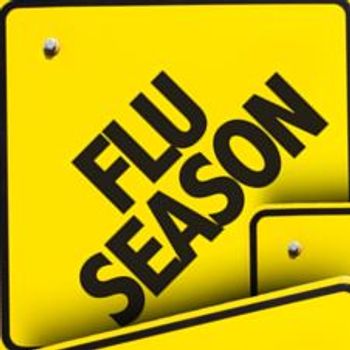
Warfarin Interactions: Update on the Most Common and Clinically Significant
Numerous factors, includingother drugs, diseases,and diet, affectthe response to warfarin.Some of these factorsdecrease the response and maylead to therapeutic failure; othersenhance the response and may resultin life-threatening bleeding.
Numerous factors, includingother drugs, diseases,and diet, affectthe response to warfarin.Some of these factorsdecrease the response and maylead to therapeutic failure; othersenhance the response and may resultin life-threatening bleeding.My goal here is to heighten yourawareness of these factors when youprescribe warfarin. I provide examplesof drugs and diseases that mayinteract with oral anticoagulants, andI also offer guidance on how to avoidor minimize these interactions.WARFARIN-DRUGINTERACTIONSThe list of warfarin-drug interactionsis long and continues to grow.1-5Many of these interactions have beenwell documented both in controlledtrials and in the clinical setting.2 Severalpotential interactions requirefurther study to establish their clinicalrelevance.The most frequently reportedwarfarin-drug interactions involve antimicrobial,cardiovascular, anti-inflammatory,GI, and CNS agents. Tables 1and 2 provide a few examples of specificdrugs within these classes thatincrease or decrease the response towarfarin.Pharmacokinetic interactions.Most warfarin-drug interactionsare pharmacokinetic. For example,trimethoprim-sulfamethoxazole(TMP-SMX) decreases the clearanceof S-warfarin, which has 5 timesgreater anticoagulant activity thanR-warfarin.3 Another type of pharmacokineticinteraction is alteration ofabsorption; cholestyramine decreasesthe absorption of warfarin.1Pharmacodynamic interactions.Concurrent aspirin therapy increasesthe risk of bleeding because it reducesplatelet aggregation and haslocal GI effects. Although low-doseaspirin may be given with warfarinwhen the benefits outweigh risks(for example, after myocardial infarction),the patient must be monitoredcarefully.Advise patients who are receivingwarfarin not to take aspirin for headacheor other minor pain; acetaminophencan be used instead. Occasionalacetaminophen use is safe; however, ifthe dosage is 9.1 g or more perweek, monitor the prothrombin time(PT)/international normalized ratio(INR) for possible increased anticoagulanteffect.6 Although the potential interactionof regular acetaminophenuse with warfarin has been debated, itis prudent to err on the side of safetyuntil more studies are done.Tips for avoiding and minimizingdrug interactions. Often it is possibleto circumvent interactions byprescribing an alternative agent. Forexample, if it is appropriate for the patient,prescribe ampicillin rather thanTMP-SMX for empiric treatment of aurinary tract infection. If an H2-blockeris indicated, select one other thancimetidine.By careful monitoring ofPT/INR, some warfarin interactionscan be managed safely. When an interactingdrug, such as rifampin,1-3,5,7must be given concomitantly withwarfarin, monitor the PT/INR whenstarting or stopping the drug andanticipate the need to change thewarfarin dosage.Herbal medicines. Millions ofpatients take these substances, someof which (eg, dong quai8) are reportedto interact with warfarin.9Ask thepatient about intake of herbal medicationsand then search the literaturefor potential interactions. Much remainsto be learned about these substances,and solid documentation ofclinically relevant interactions is frequentlylacking.EFFECT OF DISEASE ONRESPONSE TO WARFARINSome disease states alter the responseto oral anticoagulant therapy(Table 3).2-4,10 Hyperthyroidism increasesthe response to warfarin byincreasing the catabolism of vitaminK-dependent clotting factors.10-12 Incontrast, hypothyroidism decreasesthe response by slowing the catabolismof these clotting factors.10,13The liver is the site of synthesisof vitamin K-dependent clottingfactors, and hepatic dysfunction isassociated with increased PT. Thus,liver disease enhances the responseto warfarin and other coumarinanticoagulants.10,14Other diseases may alter the responseto warfarin, but their effectsare less well documented. One exampleis heart failure: some patientswith decompensated congestiveheart failure (CHF) appear to haveincreased responsiveness to oralanticoagulants.4,10 Possible mechanismsfor this effect include CHFinducedhepatic congestion and plasmavolume expansion during CHF.The latter mechanism is supportedby evidence that diuresis can decreasethe response to warfarin.15,16This decreased response may resultfrom an increased concentration ofclotting factors secondary to plasmavolume reduction.15,16The possible effects of other disorderson the response to warfarinhave recently been reviewed.10EFFECT OFDIETARY FACTORSTake dietary factors into accountwhen you assess the response towarfarin.1,2 Vitamin K deficiency mayincrease the response, whereas excessiveintake of vitamin K-richfoods, such as green leafy vegetables,may decrease the response. Largeamounts of avocado, which is low invitamin K, have also been reported toinhibit the response to warfarin.1As long as the diet is consistent,the warfarin dosage can remainstable. However, major changes in vitaminK intake can markedly alterthe response and may necessitate achange in warfarin dosage. Althoughsome clinicians counsel patients toavoid foods high in vitamin K, themost appropriate advice is to encouragea consistent, balanced diet.EFFECT OFGENETIC FACTORSA recent study suggests that theresponse to warfarin is influenced bypolymorphisms in cytochrome P-4502C9.17 Patients with these polymorphismshave impaired S-warfarinmetabolism and increased response.Future investigations need to takeinto account patients' CYP 2C9 genotype.This is because a markedly increasedresponse to warfarin early inthe course of therapy may be attributableto a polymorphism rather than--or in addition to--a disease state ordrug interaction.
References:
REFERENCES:
1.
Wells PS, Holbrook AM, Crowther NR, et al.The interaction of warfarin with drugs and food: acritical review of the literature. Ann Intern Med.1994;121:676-683.
2.
Hirsh J, Dalen JE, Anderson DR, et al. Oral anticoagulants:mechanism of action, clinical effectiveness,and optimal therapeutic range. Chest. 2001;119(suppl 1):8S-21S.
3.
O’Reilly RA. Warfarin metabolism and drug-druginteractions. Adv Exp Med Biol. 1987;214:205-212.
4.
O’Reilly RA, Aggeler PA. Determinants of theresponse to oral anticoagulant drugs in man. PharmacolRev. 1970;22:35.
5.
Cropp JS, Bussey HI. A review of enzyme inductionof warfarin metabolism with recommendationsfor patient management. Pharmacotherapy. 1997;17:917-928.
6.
Hylek EM, Heiman H, Skates SJ, et al. Acetaminophenand other risk factors for excessive warfarinanticoagulation. JAMA. 1998;279:675-662.
7.
Self TH, Mann RB. Interaction of rifampin andwarfarin. Chest. 1975;67:490-491.
8.
Page RL, Lawrence JD. Potentiation of warfarinby dong quai. Pharmacotherapy. 1999;19:870-876.
9.
Heck AM, DeWitt BA, Lukes AL. Potential interactionsbetween alternative therapies and warfarin.Am J Health Syst Pharm. 2000;57:1221-1230.
10.
Demirkan K, Stephens MA, Newman KP, SelfTH. Response to warfarin and other oral anticoagulants:effects of disease states. South Med J. 2000;93:448-454.
11.
Self TH, Weisburst, Wooten E, et al. Warfarininducedhypoprothrombinemia: potentiation by hyperthyroidism.JAMA. 1975;231:1165-1166.
12.
Kellett HA, Sawers JS, Boulton FE, et al. Problemsof anticoagulation with warfarin in hyperthyroidism.Q J Med. 1986;58:43-51.
13.
Stephens MA, Self TH, Lancaster D, Nash T.Hypothyroidism: effect on warfarin anticoagulation.South Med J. 1989;82:1585-1586.
14.
Mammen EF. Coagulation abnormalities inliver disease. Hematol Oncol Clin North Am. 1992;6:1247-1257.
15.
O’Reilly RA, Sahud MA, Aggeler PM. Impact ofaspirin and chlorthalidone on the pharmacodynamicsof oral anticoagulant drugs on man. Ann N YAcad Sci. 1971;179:173-186.
16.
O’Reilly RA. Interaction of spironolactone andracemic warfarin in man. Clin Pharmacol Ther. 1980;27:198-201.
17.
Aithal GP, Day CP, Kesteven PJL, et al. Associationof polymorphisms in the cytochrome P450CYP2C9 with warfarin dose requirement and risk ofbleeding complications. Lancet. 1999;353:717-719.
18.
Crussell-Porter L, Rindone JP, Ford MA, JaskarDW. Low dose fluconazole therapy potentiates thehypoprothrombinemic response of warfarin sodium.Arch Intern Med. 1993;153:102-104.
19.
Hassell D, Utt JK. Suspected interaction: warfarinand erythromycin. South Med J. 1985;78:1015-1016.
20.
Rosenthal AR, Self TH, Baker ED, Linden RA.Interaction of isoniazid and warfarin. JAMA. 1977;238:2177.
21.
O’Reilly RA. The stereoselective interaction ofwarfarin and metronidazole in man. N Engl J Med.1976;295:354-357.
22.
Jolson H, Tanner A, Green L, et al. Adverse reactionreporting of interaction between warfarinand fluoroquinolones. Arch Intern Med. 1991;151:1003-1004.
23.
O’Reilly RA. Stereoselective interaction oftrimethoprim-sulfamethoxazole with the separatedenantiomorphs of racemic warfarin in man. N Engl JMed. 1980;302:33-35.
24.
Cheung B, Lam FM, Kumana CR. Insidiouslyevolving, occult drug interaction involving warfarinand amiodarone. BMJ. 1996;312:107-108.
25.
Kates RE, Yee YG, Kirsten EB. Interaction betweenwarfarin and propafenone in healthy volunteersubjects. Clin Pharmacol Ther. 1987;42:305-311.
26.
Stading JA, Skrabal MZ, Faulkner MA. Sevencases of interaction between warfarin and cyclooxygenase-2 inhibitors. Am J Health Syst Pharm. 2001;58:2076-2080.
27.
Lehmann DF. Enzymatic shunting: resolvingthe acetaminophen-warfarin controversy. Pharmacotherapy.2000;20:1464-1468.
28.
Silver BA, Bell WR. Cimetidine potentiationof the hypoprothrombinemic effect of warfarin.Ann Intern Med. 1979;90:348-349.
29.
Qureshi GD, Reinders TP, Somori GJ, EvansHJ. Warfarin resistance with nafcillin therapy. AnnIntern Med. 1984;100:527-529.
30.
Levine M, Sheppard I. Biphasic interaction ofphenytoin with warfarin. Clin Pharmacy. 1984;3:200-203.
Newsletter
Enhance your clinical practice with the Patient Care newsletter, offering the latest evidence-based guidelines, diagnostic insights, and treatment strategies for primary care physicians.



























































































































































































































































































